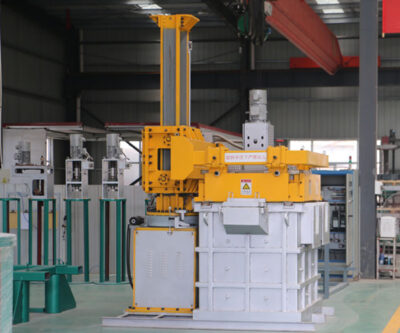The purpose of the online degassing aluminum system is to remove the hydrogen dissolved in the liquid substance and some solid impurities, such as oxides and salts, various slagging substances, sodium fluoride, aluminum fluoride, and still other fluorides. This suspension is also favored by the presence of hydrogen.
The online degassing aluminum system is composed of a heat-insulating container body with a detachable lid, and includes a heating device for heating the metal to be processed. The main body of the degassing container is divided vertically, and two chambers are connected to each other near the bottom of the container. One of the chambers is provided with an inlet for the liquid metal to be processed, and a device for injecting inert or reactive gas is injected. The position can be opposite Degas the incoming metal.
Online metal degassing is usually carried out by injecting oxygen-free nitrogen, or argon, or another inert gas, which works by entraining and mixing liquid metal.
Materials in contact with molten aluminum, such as materials defining inlets, outlets, baffles, and degassing zones, should be substantially refractory to molten aluminum, such as silicon carbide or any refractory material. The degassing gas disperser can be made of porous graphite or other porous materials that are substantially resistant to molten aluminum.
Porous graphite has an advantage in achieving a wide distribution of small bubbles, which is obviously beneficial to obtain the maximum degassing effect with the least gas consumption. The generation of small bubbles and their distribution in the degassing chamber, in some cases it may be advantageous to use a mechanical agitator, such as rotating blade turbine impellers running at a medium speed of 100 to 400 rpm and located in the degassing chamber. The lower area of the zone is close to the degassing gas introduction position. This effect tends to produce small bubbles and distribute them widely throughout the molten metal, and accelerate the degassing effect.

